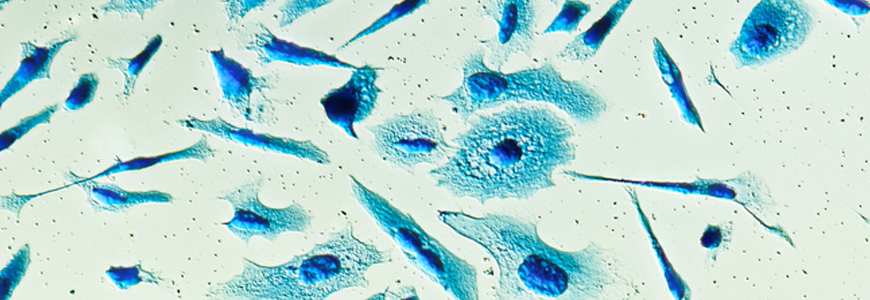In the past several years, a number of major clinical advances have directly impacted the care of patients with prostate cancer; in 2018, several studies led to FDA approval of new therapies. The Duke Cancer Institute’s new Center for Prostate & Urologic Cancers is bringing these new discoveries directly to its patients and making meaningful strides in tackling metastasis and aggressive cancer behavior.
Andrew J. Armstrong, MD, medical oncologist and director of research for the new Center, selected the top ten prostate cancer publications and FDA approvals from 2018 that provide new insights into the biological underpinnings of the disease and examine new targeted therapies to help combat it, and commented on their importance to the field.
Immunotherapy
A translational paper by researchers at the University of Michigan identified a new subset of aggressive prostate cancers characterized by loss of the DNA repair enzyme CDK12, which led to genome instability but not homologous repair deficiency. Rather, the types of genomic alterations in these tumors are called tandem duplications, which lead to additional copies of cancer genes throughout the genome. “Interestingly,” Armstrong notes, “these tumors harbor an increased number of neoantigens that can be recognized by the immune system, leading to greater T cell activation and immune responses to immune checkpoint inhibition.”
Prostate-specific membrane antigen (PSMA) is a cell surface enzyme that is expressed by the majority of prostate adenocarcinomas, and is lost only in more advanced neuroendocrine or de-differentiated tumors, representing a potential target for immunotherapy and antibody drug conjugate therapies. PSMA-Lu177 is a radionuclide therapy currently in phase 3 testing globally including at Duke, based on a smaller phase 2 trial that demonstrated preliminary encouraging, durable, and safe efficacy in some men with PSMA-positive metastatic castration resistant prostate cancer (mCRPC). For those men with neuroendocrine prostate cancer, Duke investigators are studying immunotherapy currently in clinical trials for the safety and efficacy of avelumab and the safety and efficacy of navarixin in combination with pembrolizumab.
Hormonal Therapies
Two global studies of enzalutamide and apalutamide evaluated their safety and efficacy in men with castration resistant prostate cancer, but with no visible evidence of metastatic disease on standard imaging, and showed that these hormonal therapies can delay metastasis or death by nearly 80 percent. Armstrong says that these studies support the FDA approval and National Comprehensive Cancer Network (NCCN) guideline recommendations to consider using one of these therapies to delay the onset of metastatic disease in men with rapid prostate specific antigen doubling times (<10 months) despite androgen deprivation therapy.
Predictive Biomarkers
This biomarker study, along with the Duke-led PROPHECY clinical trial, suggest that a liquid biopsy test can predict the efficacy of androgen receptor inhibition with enzalutamide or abiraterone, in men with high-risk mCRPC, particularly in the second-line setting after failure of one hormonal therapy. “Further, these studies suggest that taxane chemotherapy remains effective in men with AR-V7 positive prostate cancer, suggesting that CTC AR-V7 testing may be a validated predictive biomarker to help physicians and patients decide on the correct next therapy,” Armstrong notes.
Radiotherapy
“The prior standard of care in men with metastatic disease has been to not treat with radiation under the assumption that ‘the horse was out of the barn,’ and to focus on systemic therapy,” says Armstrong. “In this important recent study from the UK STAMPEDE trial, while overall there was no survival benefit from radiation, there was a survival benefit in a pre-specified and large subgroup of men with more oligometastatic prostate cancer, meaning only a few sites of metastatic disease in the bones or lymph nodes.” He adds that these findings have immediate practice-changing implications and suggest that men with mHSPC who are treated with systemic therapy—typically androgen deprivation therapy (ADT) plus abiraterone or docetaxel—should receive radiation to the prostate.
MRI-Targeted Fusion Biopsy
This important study from the UK found that MRI-targeted fusion biopsies were superior at identifying aggressive prostate cancer as compared to standard non-targeted ultrasound guided biopsies for men with a clinical suspicion of prostate cancer. MRI fusion biopsy also reduced the number of men diagnosed with clinically insignificant low-risk prostate cancer, which is also a great benefit, according to Armstrong. Duke currently incorporates this treatment into the current diagnostic algorithm for patients where prostate cancer is suspected.
Abiraterone Acetate
These two studies (LATITUDE and STAMPEDE) from 2017 led to the 2018 FDA approval of abiraterone acetate for the treatment of men with metastatic high risk prostate cancer, and the NCCN guidelines to recommend this therapy for all men with mHSPC in addition to standard ADT.
Hypofractionation
A 2018 study and a 2016 study, among many others, established that shorter courses of radiation (approximately five weeks) provide similar efficacy and safety to standard longer courses (approximately eight to nine weeks) without added toxicity. “Newer radiation approaches now being tested are ultrahypofractionation with even shorter courses, combined brachytherapy for higher risk prostate cancers, and combination therapies with effective new hormonal therapies,” says Armstrong.
Armstrong concludes that these studies are providing new hope for men with prostate cancer, in terms of not only extending survival and remissions but also by reducing treatment burden and thus side effects for those men who do not require therapy.
